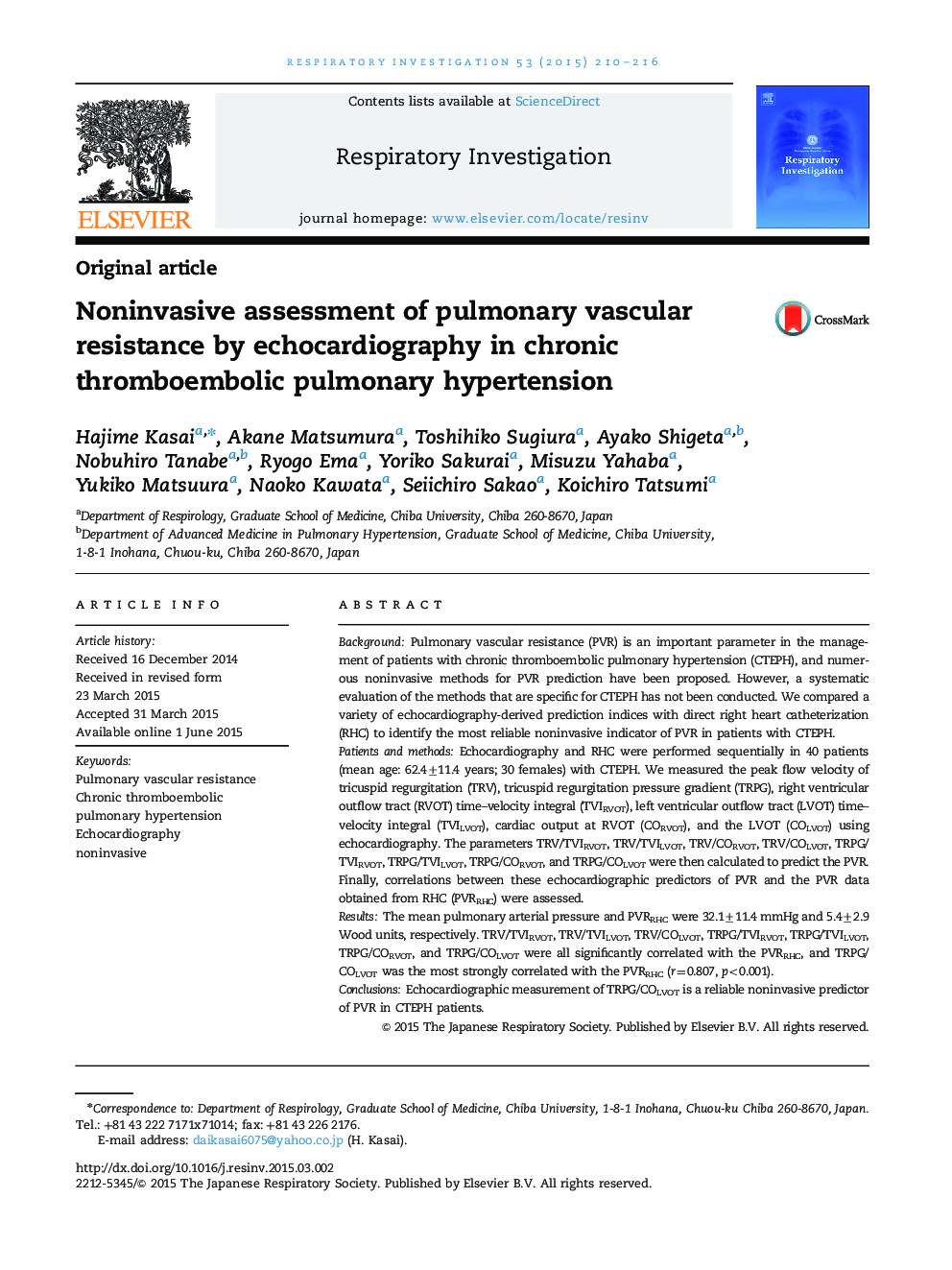| Article ID | Journal | Published Year | Pages | File Type |
|---|---|---|---|---|
| 3418639 | Respiratory Investigation | 2015 | 7 Pages |
BackgroundPulmonary vascular resistance (PVR) is an important parameter in the management of patients with chronic thromboembolic pulmonary hypertension (CTEPH), and numerous noninvasive methods for PVR prediction have been proposed. However, a systematic evaluation of the methods that are specific for CTEPH has not been conducted. We compared a variety of echocardiography-derived prediction indices with direct right heart catheterization (RHC) to identify the most reliable noninvasive indicator of PVR in patients with CTEPH.Patients and methodsEchocardiography and RHC were performed sequentially in 40 patients (mean age: 62.4±11.4 years; 30 females) with CTEPH. We measured the peak flow velocity of tricuspid regurgitation (TRV), tricuspid regurgitation pressure gradient (TRPG), right ventricular outflow tract (RVOT) time–velocity integral (TVIRVOT), left ventricular outflow tract (LVOT) time–velocity integral (TVILVOT), cardiac output at RVOT (CORVOT), and the LVOT (COLVOT) using echocardiography. The parameters TRV/TVIRVOT, TRV/TVILVOT, TRV/CORVOT, TRV/COLVOT, TRPG/TVIRVOT, TRPG/TVILVOT, TRPG/CORVOT, and TRPG/COLVOT were then calculated to predict the PVR. Finally, correlations between these echocardiographic predictors of PVR and the PVR data obtained from RHC (PVRRHC) were assessed.ResultsThe mean pulmonary arterial pressure and PVRRHC were 32.1±11.4 mmHg and 5.4±2.9 Wood units, respectively. TRV/TVIRVOT, TRV/TVILVOT, TRV/COLVOT, TRPG/TVIRVOT, TRPG/TVILVOT, TRPG/CORVOT, and TRPG/COLVOT were all significantly correlated with the PVRRHC, and TRPG/COLVOT was the most strongly correlated with the PVRRHC (r=0.807, p<0.001).ConclusionsEchocardiographic measurement of TRPG/COLVOT is a reliable noninvasive predictor of PVR in CTEPH patients.
